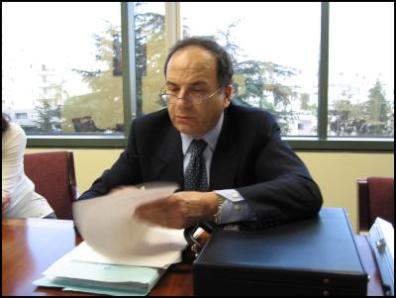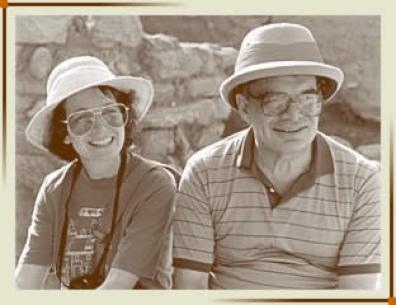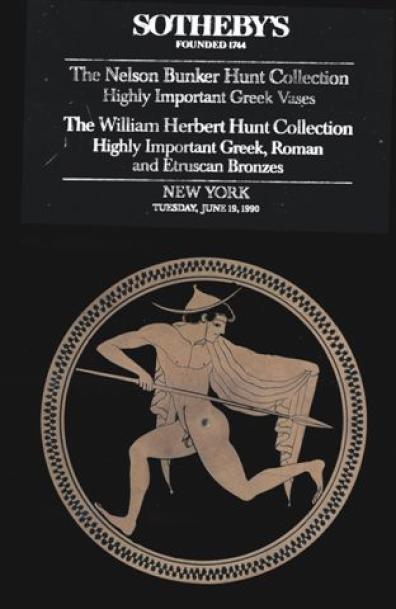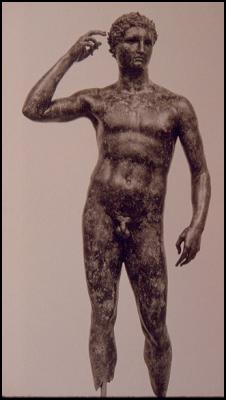Interview: Italy's Antiquities Prosecutor Fiorilli
Italy's Antiquities Prosecutor Maurizio Fiorilli On The Getty Et Al.
By Suzan Mazur

Italy's antiquities
prosecutor, Maurizio Fiorilli
Italy's antiquities prosecutor, Maurizio Fiorilli, has become the darling of the media in the past year helping to persuade the American public, and particularly the art world, to rethink the ethics of holding onto Italy's cultural patrimony with words like: "Until now we have dreamed, we have slept. Now it is time to wake up." Words meant to be heard back home in Italy, perhaps, but shot around the world via the Los Angeles Times.
An antiquities movement, a wave was created, essentially, and a signing of repatriation agreements with major US museums followed. It came at a time when people, as an escape from senseless US wars they did not vote for, suddenly took interest in an antiquities conspiracy trial in Rome. Visuals of ancient art in the media -- images of the humans we once were -- became huge with meaning.
I first interviewed Maurizio Fiorilli in the middle of February. By the end of February, Fiorilli and his team had negotiated the transfer of title from the Metropolitan Museum of Art to Italy of two big prizes, the Sarpedon Euphronios vase and Morgantina Hellenistic Silver, as well as several highly important Greek vases, among them a red-figured amphora by the Berlin painter.[ LINK: The Italy-Met Euphronios Accord? ].
Last September he secured the return of the beautiful marble Sabina statue and 12 other pieces from the Museum of Fine Arts in Boston. [LINK: Ancient Art Italy Wants Back From Boston's MFA].
And at year's end, Fiorilli has the commitment of the Getty Museum to return 26 of the 47 items Italy says are its cultural property, while former Getty curator Marion True, at the center of the trial in Rome, tells what she knows about the conspiracy to loot half of Italy's Greek and Roman culture over the past several decades. Art dealer Bob Hecht is her co-defendant. Giacomo Medici, already convicted and sentenced to 10 years for his part in the conspiracy, has his final case appeal in January.
Italy and the Getty are deadlocked over the remaining 21 pieces including a bronze statue of an athletic victor.
Fiorilli is now also in talks with the Princeton and Cleveland Museums. [LINK: Italy Will Contest Medea Vase At Cleveland Museum]
And he hints that Italy is looking to museums elsewhere in the world for recovery of its looted art. Japan's Miho museum might be next if the case against art dealer Gianfranco Becchina goes forward, since Becchina supplied many pieces of unprovenanced ancient Western art now in Miho's collection.
High on Fiorilli's list of credentials for being chosen by his government to negotiate for its treasures appears to be his talent to woo with honey, offering antiquities loans in place of the Italian masterpieces going back. Aside from being a shrewd bargainer though, he's also almost always described as "a lovely man", modest about his case successes of the past -- even though they are evident in the confidence he has shown in Italy's sweep across the US museum landscape.
According to Peter Watson, who spoke with former Met director Tom Hoving recently, there has indeed been a "sea change" in the world of antiquities as a result of Italy's efforts. [LINK: Krumpets With Medici Conspiracy's Peter Watson]
Fiorilli recognizing how very rich Italy already is in ancient art -- and coming from an old civilization which has outgrown its imperial ways -- believes the path forward now is to share in order to deter future cultural destruction. Our recent interview follows:
INTERVIEW TRANSCRIPT BEGINS: Suzan Mazur: The Getty Museum has said it will in the future abide by the UNESCO convention and limit its purchase of antiquities to those in known collections or documented in a publication before 1970. This is an improvement from the policy Marion True put in place.
True, the Getty's antiquities curator 1986-2005, who is now on trial there in Rome for conspiracy to traffic in ancient art, considered antiquities in a known collection or documented in a publication before 1995 okay to buy.
What should the new Getty policy on acquisitions be?
Maurizio Fiorilli: The Getty declares that from today forward it will abide by the UNESCO convention of 1970. However, what about all the objects in its collections that were acquired before its new policy declaration?
Marion True has, in the past, said Getty had a new antiquities acquisitions policy, but the reality was that Getty continued to acquire objects without clear provenance.
Since new evidence has emerged, which we have provided, has the Getty reviewed its acquisitions in light of its desire to adhere to the UNESCO convention?
An arbitrary line of policy does not seem consistent with the principles established by that convention -- on a moral and deontological basis.
Italy decided to deposit the agreement with UNESCO and offered the Getty the same.
Getty only revised its policy during the negotiations because Italy was negotiating using the UNESCO convention of 1970 as a basis for our requests.
Suzan Mazur: The term "known collections" - isn't that a bit of a minefield? That would make it okay to own pieces from the Hunt-Sotheby's sale. Pieces that were lacking provenience and provenance and are now known to have been routed to the Hunt brothers through Bruce McNall via Bob Hecht via Giacomo Medici. Bob Hecht is currently a co-defendant in the Rome trial and Medici is appealing a 10-year sentence for antiquities trafficking.
This was the auction where the signed Euphronios wine cup and krater were put on the block. I understand the Italian government has its eye on that ex Hunt Euphronios Kyknos krater now owned by Shelby White and on loan to the Met. The Sarpedon Euphronios wine cup, I believe, becomes Italy's if Medici, the current owner, loses his case appeal.
Euphronios Death Of Kyknos Krater, 510 BCAlso, a wine cup depicting a young hunter with spear from the Hunt-Sotheby's auction recently turned up for sale in a Greek & Roman vase exhibition at Phoenix Ancient Art, the gallery owned by Hicham and Ali Aboutaam in New York. The kylix was the cover of the 1990 Hunt-Sotheby's catalogue and sold at the time for $150,000 plus tax. The Aboutaam exhibition is over and it's unclear who now owns the wine cup or how much it was sold for.
Red-figured kylix, 510 BC, Epidromos Painter, with inscription, "Epidromos is beautiful". The wine cup inside depicts a young hunter, wearing a brimmed hat tied under his chin and short mantle draped across one shoulder. He is running and carries a spear. The outside scene is one of naked revelry.So "known collections" seems very tricky language to use as policy. What is your response to this?
Maurizio Fiorilli: "Known collections" refers to those held objects for which there is clear title. Collectors buying antiquities on an open market that ignores possible origin from a source country -- whose laws and national policies explicitly prohibit their export -- results in purchase of material which has no title and has been illicitly exported.
This also applies to museums that might acquire material either in a primary or secondary manner (from collectors).
There is a "soft law" which governs museums and collectors, that makes explicit reference to the UNESCO convention and should govern their purchasing behavior.
Suzan Mazur: Another problem with relying on so-called documented pieces is the phony documentation and misrepresentation of ownership that goes on.
The Aboutaam brothers, who held the recent sale of 6th C BC-4th C BC Greek & Roman vases referred to in my earlier question, promoted the collection's previous owner as a "Dr. C.J.D." But those initials were made up supposedly to honor a deal with the previous owner, a precondition to exhibition and sale to the Aboutaams.
The only famous CJD initials the world knows are those of Creutzfeldt Jakob Disease, named for the two men who discovered the neurological degenerative condition resembling Bovine Spongiform Encephalopathy (Mad Cow Disease).
However, US authorities did nothing to prevent the sale of vases from going forward. Would you comment?
Maurizio Fiorilli: False documentation is often created to dupe the purchaser. When that evidence is disproved, it should be discounted. The collector then should try and redress the wronged country and return the object to its rightful owner. The basis for the return is one of ethical reasoning, not necessarily a juridical one.
The [Euphronios-]Onesimos kylix [depicting the sack of Troy] was returned to Italy by the Getty because a shard was found in the Medici warehouse and under the vase was found Etruscan writing, proving origins in Italy's Etruscan cultural area.
Suzan Mazur: The Getty, America's biggest trust - $5.5 billion - would suffer a significant monetary loss if the antiquities Italy has asked to be repatriated are, indeed, returned to Italy. And California's Attorney General has said the Getty board of trustees would be viewed as negligent for making unwise investments.
How much of a monetary loss to the Getty are we talking about?
How much of a gain would there be for the Getty to cooperate?
Maurizio Fiorilli: You cannot do culture based on fraud and theft [emphasis added].
The economic value is of little consequence. What is important is the gain Getty will derive on the ethical plane. Moral gain is the reward.
Also, the monetary value of the objects is not Italy's problem. It is the problem of those who spend good money for objects that are without clear title and are illicitly removed from their place of cultural origin.
It is up to the authorities in the USA who are responsible for controlling the Getty to investigate how the money was spent.
Culture predisposes honesty and transparency.
The Getty has made a "loss sheet" -- if it were required to return certain objects. Why has it not made public the source documents used to create this "loss sheet"?
Suzan Mazur: Italy has said it is about at the breaking point and is unwilling to compromise further. Sanctions are next. What exactly would those sanctions entail?
Maurizio Fiorilli: Italy will take any measures it sees fit in the future. Now, all options are open.
Suzan Mazur: Why did the October agreement between Italy and Switzerland only pertain to trafficking of art dating from the 16th century?
Maurizio Fiorilli: The agreement with Switzerland follows a legislative initiative in their country. It is a reciprocal agreement. In the future the possibility exists for modifications which reflect changed conditions.
Suzan Mazur: What are your other thoughts about the current impasse with the Getty?
Maurizio Fiorilli: You know, we've dealt with the Getty in the same manner as the Metropolitan and the MFA Boston. These two were successful accords. And other museum negotiations are moving forward.
Suzan Mazur: Aside from your almost always being described as "a lovely man", why were you asked to take on the Medici/Hecht/True trial for your government? Also, what has brought you the most satisfaction during the course of this case? What has proved the most frustrating?
Maurizio Fiorilli: I am frustrated with the Getty's attitude. We tried to create a "package" which included all the concepts involved: the trial and evidence gathered and moral value plus public opinion.
What I want to underline is that our request took note of Getty's internal difficulties. We tried to create a collaboration which helped Getty identify objects without clear title. The evidence we presented was juridical or legal and cultural [emphasis added].
The 2,500 year old Getty bronze statue of a "victorious athlete" has not trial evidence that binds it to Italy, but there is legal justification that the sculpture belongs to Italy's cultural patrimony localized in Fano (Ancona) where the bronze was off-loaded and remained for a period of time, clandestinely. And then sold clandestinely. And then exported clandestinely.
Victorious Athlete, Bronze, 4th C. BC, inspired by Lysippos - Source ImageThis secrecy surrounding the statue was what caused J. Paul Getty, Sr. to ask if the statue had clear title. He ultimately did not purchase it during his lifetime.
Suzan Mazur: I saw no reports in the media about the US Ambassador sitting in on Italy's negotiations with the Getty - a $5.5 billion private trust - although he apparently did. Americans expect their ambassadors abroad to be on the right side of justice. In your opinion was it inappropriate for the US ambassador to participate in the Getty negotiations?
Maurizio Fiorilli: All our negotiations with various subjects are based on dossiers which are drawn from trial evidence procedures, cultural indications or on Italian law regarding Italian cultural patrimony. Our negotiations are not juridical, but on an ethical plane with all the subjects.
We use all documents and evidence in an ethical manner. Our aim is to stop illegal excavations and illicit trafficking of archaeological material.
Suzan Mazur: It is not unprecedented for US politicians to side with antiquities collectors and benefit from their generous contributions to campaign coffers.
-- Shelby White and Maurice Tempelsman, owners of two of the most important private antiquities collections, have been big Democratic party contributors through the years, for example.
-- President Bill Clinton appointed Shelby White to his Cultural Property Advisory Committee set up to stop the flow of antiquities to private collections. And Clinton and Clinton's Secretary of State, Madeleine Albright, have been close to Maurice Tempelsman. [LINK]
-- The late Senator Daniel Patrick Moynihan (Dem.-NY), who served for a time as Ambassador to the UN and had his own foreign art collection, told a gathering at the National Press Club in Washington, D.C.in 1995:
"I'm in love with Shelby White - say it anywhere. I want the world to hear it."
-- Mrs. Daniel Patrick Moynihan [LINK] currently serves as co-trustee of the Leon Levy Foundation, run by Levy's widow Shelby White.
Shelby White And Leon Levy -
Source Image-- New York Mayor Mike Bloomberg (Rep.), also owner of Bloomberg News, sits on the Metropolitan Museum of Art's board of trustees.
What problems do politicians with a hand in the antiquities cookie jar pose for source countries like Italy seeking the return of its cultural patrimony?
Also, regarding Shelby White -- the sense is she is also buying off academics. She is now on the board of trustees of New York University. Earlier this year NYU anthropologist Randall White said he did "not want to be associated with Shelby White's money in any way" and resigned from NYU's Center for Ancient Studies when he found out the school was accepting $200 million from the Leon Levy Foundation to establish the Institute for the Study of the Ancient World which would be presenting exhibitions, etc., in Shelby White's townhouse on 84th Street. [LINK]
There have been similar rumblings at Harvard, home to the Shelby White-Leon Levy Program for Archaeological Publications, where a professorship has been created to support an outstanding scholar of the ancient world. [LINK]
Is there any indication Shelby White plans to return looted pieces in her collection to Italy?
Maurizio Fiorilli: We are currently holding talks with representatives of Shelby White and therefore anything regarding the collector or her collections are covered by our confidentiality.
Suzan Mazur: Will you pursue artifacts at Japan's Miho museum where many unprovenanced pieces, apparently from Gianfranco Becchina, were sold?
Maurizio Fiorilli: It is not only American museums we are investigating. We started with the US because an American curator is on trial. That was our source of new evidence. But we have dossiers on museums and collections all over the world.
Suzan Mazur: Author Peter Watson has told me in a recent interview that Gianfranco Becchina comes from "Mafia country" and that he may have his connections. Are you concerned about this? Are proceedings against Becchina coming up in Rome?
Maurizio Fiorilli: As far as Becchina -- the beginning investigation, the documents have been presented to the judge. We are awaiting the judge's decisions as to whether he will proceed or not.
I have no comment as far as insinuations about Becchina's personal life and links.
TRANSCRIPT ENDS:
 Suzan
Mazur's stories on art and antiquities have been published
in The Economist, Financial Times, Connoisseur, Archaeology
(cover) and Newsday. Some of her other reports have appeared
on PBS, CBC and MBC. She has been a guest on McLaughlin,
Charlie Rose and various Fox Television News Programs.
Email: sznmzr @
aol.com
Suzan
Mazur's stories on art and antiquities have been published
in The Economist, Financial Times, Connoisseur, Archaeology
(cover) and Newsday. Some of her other reports have appeared
on PBS, CBC and MBC. She has been a guest on McLaughlin,
Charlie Rose and various Fox Television News Programs.
Email: sznmzr @
aol.com





 Keith Rankin: Make Deficits Great Again - Maintaining A Pragmatic Balance
Keith Rankin: Make Deficits Great Again - Maintaining A Pragmatic Balance Richard S. Ehrlich: China's Great Wall & Egypt's Pyramids
Richard S. Ehrlich: China's Great Wall & Egypt's Pyramids Gordon Campbell: On Surviving Trump’s Trip To La La Land
Gordon Campbell: On Surviving Trump’s Trip To La La Land Ramzy Baroud: Famine In Gaza - Will We Continue To Watch As Gaza Starves To Death?
Ramzy Baroud: Famine In Gaza - Will We Continue To Watch As Gaza Starves To Death? Peter Dunne: Dunne's Weekly - A Government Backbencher's Lot Not Always A Happy One
Peter Dunne: Dunne's Weekly - A Government Backbencher's Lot Not Always A Happy One Richard S. Ehrlich: Cyber-Spying 'From Lhasa To London' & Tibet Flexing
Richard S. Ehrlich: Cyber-Spying 'From Lhasa To London' & Tibet Flexing